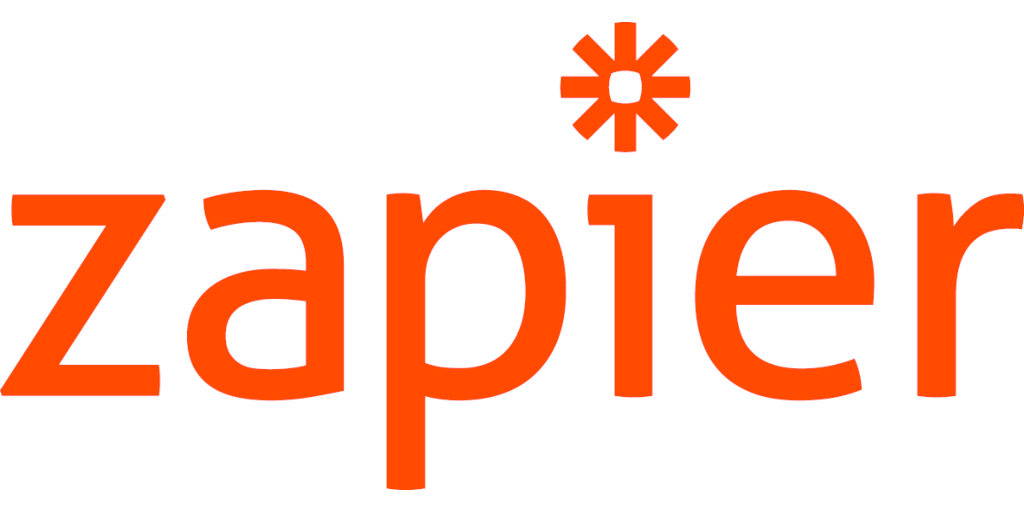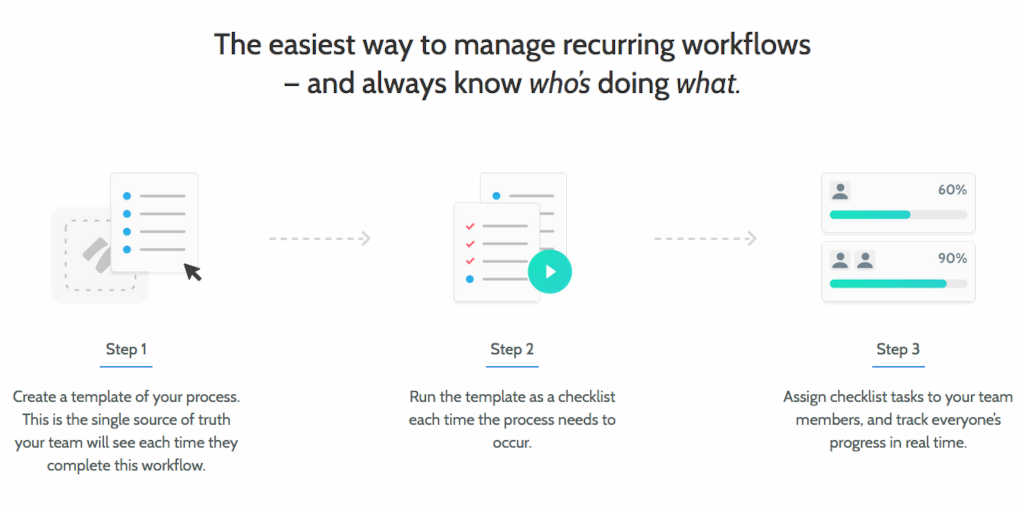 As we’ll see, certain elements which we consider part of the normal workplace are being abandoned by experimenting companies in favor of new models.
As we’ll see, certain elements which we consider part of the normal workplace are being abandoned by experimenting companies in favor of new models.
But why are they being abandoned?
For some, it’s about reducing overhead. For others, it’s about finding new ways to combat the traditional problems a growing company faces. It could be about opening up a broader talent pool, increasing adaptability, or navigating uncertain economic environments.
The ultimate goal is to make the company more successful.
Here at Process Street, we have our own thoughts on that looming forebearer, hierarchical structure, so we thought we’d check out what the Jones’s are up to. This post will look at the organizational structure of four of the most successful startups out there and why they’ve opted to make the long-established hierarchical structure on its head.
- The rise and fall of flat organizational structures
- The Process Street path
- Create the right organizational structure for your business
Let’s get to it.
The rise and fall of flat organizational structures
Flattening hierarchical structures sounds really cool. It has that whole rebellious/pushing boundaries/innovative feel startups love to embrace in their cultures.
The stereotypical tech company is often portrayed in the media (sometimes without exaggeration) as having unusual work practices: pizza for all, table tennis in every room, and beanbags instead of chairs.
The key to all of this is removing middle management and letting your employees self-organize and self-manage. Basically, free-range workers with few (if any) boundaries on what they do with their time.
While this scenario sounds like the utopian ideal of workplace structures, many of flat structure’s early advocates are now saying it doesn’t work. And by “doesn’t work” I mean “doomed to fail and take your company with it.”
Is that really the case, though? Well, let’s find out.
Zappos’ (sort of) holacracy
 Back in the halcyon days of 2013, CEO Tony Hsieh announced the company would transition to a holacratic model.
Back in the halcyon days of 2013, CEO Tony Hsieh announced the company would transition to a holacratic model.
For those not on the cutting edge of business ideas from nearly a decade ago, holacracy is:
Holacracy is a new way of structuring and running your organization that replaces conventional management. Power is distributed throughout a concrete organizational structure – giving individuals and teams freedom while staying aligned to the organization’s purpose.
Essentially, holacracy is the anti-structure of organizational structures.
If you check out Zappos Insights, they’re still very much on the holocratic bandwagon. Some not very strenuous digging, however, reveals that the company has been quietly adjusting its approach. As it turns out, people don’t tend to work very well if they don’t know what they’re supposed to be doing. Go figure.
Zappos says this “evolution” is due to the fact that holocracy is designed to focus on work while Zappos “is *all* [sic] about people.”
Rather than an organizational free-for-all, Zappos now utilizes “leaders” who hold employees accountable, communicate clear goals and expectations, and enforce company rules and guidelines.
You may draw your own conclusions.
Buffer: Transparency, task forces, & “fully distributed teams”
 By November of 2015, Buffer had grown enough that it was time to start seriously thinking about its organizational structure. As a result, they implemented some of the traditional hierarchical elements, but that didn’t really work, either.
By November of 2015, Buffer had grown enough that it was time to start seriously thinking about its organizational structure. As a result, they implemented some of the traditional hierarchical elements, but that didn’t really work, either.
Then Buffer learned about Zappos’ holocracy experiment and Frederic Laloux’s book, Reinventing Organizations.
Buffer jumped headlong into a completely flat structure without a second thought. According to co-founder Leo Widrich:
“We just let loose, and the message was, “Everyone go figure out what you want to do and work on, without too much guidance or leadership.”
Flattening the company’s structure involved:
- Removing all managers
- Stopping 1:1s and mentorship sessions
- Getting previous managers more involved in day-to-day roles and tasks
- Letting people freely choose what project they want to get involved in
This did not go over well. Buffer, like Zappos, ran into the issue of too much self-management. Widrich describes the lack of guidance or accountability “pretty overwhelming” for employees.
Ultimately, Buffer decided that a little bit of hierarchy can be a good thing. They brought back 1:1s and mentorship sessions, switched from teams to “task forces”, and implemented a policy of absolute transparency.
The solution Buffer found to their organizational woes turned out to not be holacracy, hierarchy, or a permanent structure at all. Instead, Buffer opted for flexibility. Instead of a diagram, it uses a table to provide clarity, order, and communication but allows that structure to be as fluid as it needs to be.
Zapier: Remote before remote was cool
 Unlike many of its counterparts – particularly its remote counterparts – Zapier implemented a management structure early.
Unlike many of its counterparts – particularly its remote counterparts – Zapier implemented a management structure early.
According to Wade Foster (co-founder and CEO), building that structure when you only have 10 or so people establishes expectations, creates trust, and prevents culture shock down the road when you really need to put that structure in place.
Zapier is a bit cagier than others about their exact structure, but it’s something like a process-based structure. It credits its success with three important things:
- Teams
- Tools
- Processes
“Good processes let you get work done in the absence of all else. It provides structure and direction for getting things done.” – Wade Foster
As Foster points out (and we have stated many, many times), good processes aren’t static. They change. If a process isn’t meeting your needs anymore – change it. If a process isn’t being used – get rid of it. Processes allow you to measure the progress of your employees and your company.
At Zapier, this means keeping their teams small. Each team has 3-8 people with differing skill sets who have a singular task (or mission, which sounds way cooler) to complete. That team works entirely autonomously, fully responsible for their success or failure.
For accountability, each team regularly posts their projects and progress to the whole company. That may sound like a horrible way to shame employees who haven’t made enough progress, but that’s not the aim here. The aim is to provide transparency and overcommunication.
When everyone knows what everyone else is doing, knowledge spreads faster. You never know who will have the answer to your question or the solution to your bottleneck. Company transparency means that, not only do you gain the knowledge you need, but so does anyone else who runs into the same problem.
Zapier’s goal is to get things done and get them done fast, accurately, and in a way that keeps the people doing those things at the forefront.
The message from Basecamp
 Basecamp, like Zapier, is more focused on the how of getting things done than who sits where and what hat they wear. Which, for many of us, is the whole appeal of working at a startup.
Basecamp, like Zapier, is more focused on the how of getting things done than who sits where and what hat they wear. Which, for many of us, is the whole appeal of working at a startup.
For Basecamp, every decision has been about maintaining simplicity and a calm environment. While most startups are in a frenzy to scale, grow, and just do more, Basecamp stuck to one product.
“We’ve decided to stay as small as we can for as long as we can.” – Jason Fried and David Heinemeier Hansson, It Doesn’t Have to Be Crazy at Work, page 214
Simple and calm doesn’t mean unprofitable, though; Basecamp has maintained profitability for a continuous 15 years, which is no small feat.
Similar to the other examples in this post, Basecamp opted for flexibility over one of the traditional organizational structures. Teams of three are assembled around specific projects based on people’s interests and they work on that project for a six-week sprint.
There’s no project manager per se, but the designer tends to play the role of team leader. They don’t track hours, either. The team has six weeks to finish the project, and however they choose to organize their time is up to them.
All updates and communications are centralized in one tool where everyone gets a good view of what’s happening in the company. When you know what other teams are doing, you can make more informed decisions about your own projects, or offer feedback, or see an angle you hadn’t thought of.
Transparency really does make the startup go ‘round.
The Process Street path
It’s pretty obvious by now that traditional organizational structures are not a good fit for startups, especially remote startups. We may not have pizza parties and ping-pong tables, but startups do actually do things differently.
And what about Process Street? To be honest, we do a combination of methods that have been covered so far. Technically, we have a hierarchical organizational chart and we have traditional hierarchical job titles, but that’s where the traditional stuff stops.
Sure, I’m more likely to get a faster response from my team leader than the department VP, but that doesn’t mean I can’t go directly to the VP if he’s the one who can answer my question. It’s a waste of everyone’s time for me to ask the team leader to ask the department manager to ask the VP to ask the VP of another department a question that I could easily ask myself through a Slack DM.
We follow the values of transparency, overcommunication, ownership, and – obviously – the importance of strong processes. Every person in the company is responsible for – and actively encouraged – to improve existing processes, or even find new ways of doing them entirely.
Like Basecamp, we follow sprints. Teams pitch ideas to leadership who decide which ones to pursue, and those ideas are worked on for 4-6 weeks (depending on department). But we also get “free” time to work on projects or research that we’re passionate about. This could be a feature prototype, an entirely new process, diving into cutting-edge research – anything you can imagine, basically.
And we stay flexible, as individuals, as teams, and as a company. Roles shift and change as people start new initiatives or take on new responsibilities. New teams are formed from existing teams.
Whatever happens, we just roll with it.
How you can do what we do, too

At Process Street, we employ a number of the organizational structures and philosophies mentioned throughout this article, including but not limited to:
- Remote working and a dispersed team
- Collaborative creation of processes and policies
- An emphasis on self-development and a promotion of good work-life balance
- Focused development practices
At the center of the Process Street operations is the platform itself. All our processes are documented and accessible to all. This allows staff to jump into new tasks easily and efficiently.
We also play with elements of internal entrepreneurialism, launching related products like Inside SaaS Sales which records and shows the sales and marketing cadences of top SaaS companies; a product we were interested in and know can service the needs of our user base well.
Utilizing Process Street allows your employees to document their processes simply and easily, creating organic structure within your company’s operations. The Pages feature, in particular, is great for creating a centralized knowledge base for your teams that lives side-by-side with your process workflows.
Create the right organizational structure for your business
So is flat organizational structure a thing of the past?
Well, it depends.
Perhaps a better word for it is horizontal. A flat organizational structure comes across as static – stagnant even. A horizontal structure is always looking ahead. It can be a straight line or one that zigzags around obstacles.
How you structure your business depends on the size, the industry, and the existing culture.
There is no one right answer.
However, if you’re thinking of experimenting with organizational structure, be sure to consider that you’re doing it for the right reasons and with the right reasoning.
To make as drastic a change as Zappos has requires supreme confidence in your model, and it does mean accepting a large increase in risk.
The Basecamp organizational structure, on the other hand, pulls from effective proven structures while simultaneously promoting the kind of ethos apparent in experimental elements like Buffer.
Whichever you go for, we at Process Street will be here to support you and your business on the journey.
Have you worked in flat companies? Do you want to see more or less horizontalism in your business? Let us know in the comments below!







 Workflows
Workflows Projects
Projects Data Sets
Data Sets Forms
Forms Pages
Pages Automations
Automations Analytics
Analytics Apps
Apps Integrations
Integrations
 Property management
Property management
 Human resources
Human resources
 Customer management
Customer management
 Information technology
Information technology



Adam Henshall
I manage the content for Process Street and dabble in other projects inc language exchange app Idyoma on the side. Living in Sevilla in the south of Spain, my current hobby is learning Spanish! @adam_h_h on Twitter. Subscribe to my email newsletter here on Substack: Trust The Process. Or come join the conversation on Reddit at r/ProcessManagement.